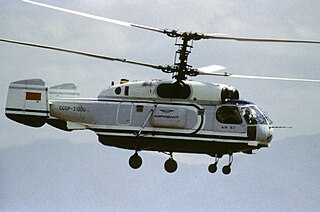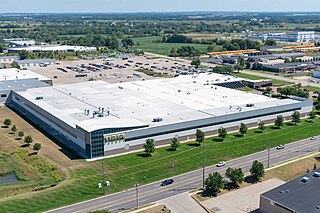
An electric boat is a powered watercraft driven by electric motors, which are powered by either on-board battery packs, solar panels or generators.

An outboard motor is a propulsion system for boats, consisting of a self-contained unit that includes engine, gearbox and propeller or jet drive, designed to be affixed to the outside of the transom. They are the most common motorised method of propelling small watercraft. As well as providing propulsion, outboards provide steering control, as they are designed to pivot over their mountings and thus control the direction of thrust. The skeg also acts as a rudder when the engine is not running. Unlike inboard motors, outboard motors can be easily removed for storage or repairs.

A two-strokeengine is a type of internal combustion engine that completes a power cycle with two strokes of the piston in one revolution of the crankshaft. A four-stroke engine requires four strokes of the piston to complete a power cycle in two crankshaft revolutions. In a two-stroke engine, the end of the combustion stroke and the beginning of the compression stroke happen simultaneously, with the intake and exhaust functions occurring at the same time.
Yamaha Motor Co., Ltd. is a Japanese mobility manufacturer that produces motorcycles, motorboats, outboard motors, and other motorized products. The company was established in the year 1955 upon separation from Nippon Gakki Co., Ltd. and is headquartered in Iwata, Shizuoka, Japan. The company conducts development, production and marketing operations through 109 consolidated subsidiaries as of 2012.

A stationary engine is an engine whose framework does not move. They are used to drive immobile equipment, such as pumps, generators, mills or factory machinery, or cable cars. The term usually refers to large immobile reciprocating engines, principally stationary steam engines and, to some extent, stationary internal combustion engines. Other large immobile power sources, such as steam turbines, gas turbines, and large electric motors, are categorized separately.

A motorboat, speedboat or powerboat is a boat that is exclusively powered by an engine.
A trolling motor is a self-contained marine propulsion unit that includes an electric motor, propeller and control system, and is affixed to an angler's boat, either at the bow or stern. A gasoline-powered outboard used in trolling, if it is not the vessel's primary source of propulsion, may also be referred to as a trolling motor. The main function of trolling motors was once to keep the boat running at a consistent, low speed suitable for trolling, but that function has been augmented by GPS-tracking trolling motors that function as "virtual anchors" to automatically maintain a boat's position relative to a desired location, such as a favorite fishing spot. Trolling motors are often lifted from the water to reduce drag when the boat's primary engine is in operation.

Contra-rotating, also referred to as coaxial contra-rotating, is a technique whereby parts of a mechanism rotate in opposite directions about a common axis, usually to minimise the effect of torque. Examples include some aircraft propellers, resulting in the maximum power of a single piston or turboprop engine to drive two propellers in opposite rotation. Contra-rotating propellers are also common in some marine transmission systems, in particular for large speed boats with planing hulls. Two propellers are arranged one behind the other, and power is transferred from the engine via planetary gear transmission. The configuration can also be used in helicopter designs termed coaxial rotors, where similar issues and principles of torque apply.

A Z-drive is a type of marine propulsion unit. Specifically, it is an azimuth thruster. The pod can rotate 360 degrees allowing for rapid changes in thrust direction and thus vessel direction. This eliminates the need for a conventional rudder.

The B18 is a 1.8 L inline four cylinder overhead valve automobile engine produced by Volvo from 1961 through 1968. A larger 2.0 L derivative called the B20 debuted in 1969.

Outboard Marine Corporation (OMC) was a maker of Evinrude, Johnson and Gale Outboard Motors, and many different brands of boats. It was a multibillion-dollar Fortune 500 corporation. Evinrude began in Milwaukee, Wisconsin in 1907. OMC was based in Waukegan, Illinois. They also owned several lines of boats such as Chris Craft, Lowe Boats, Princecraft, Four Winns, SeaSwirl, Stratos, and Javelin. OMC was also a parent company to Lawn-Boy and Ryan, which made lawn mowers.

Mercury Marine is a marine engine division of Brunswick Corporation headquartered in Fond du Lac, Wisconsin. The main product line is outboard engines. It also produces the MerCruiser line of sterndrives and inboard engines. As well as an all new lineup of electric outboard motors utilizing 48V lithium-ion modular and portable designed batteries. Implementing an industry-first transverse flux motor technology, yielding high torque with optimum efficiency. Some manufacturing is in Fond du Lac, while 40-60 HP engines are made in China. Smaller engines are Tohatsus that have been rebadged.

A sterndrive or inboard/outboard drive (I/O) is a form of marine propulsion which combines inboard power with outboard drive. The engine sits just forward of the transom while the drive unit lies outside the hull.

Tiara Yachts is a boat manufacturer headquartered in Holland, Michigan, and is one of the oldest privately held boat manufacturers in the United States. The company, founded in 1974 by Leon Slikkers, manufactures luxury inboard and outboard yachts ranging from 34–60 feet.

An inboard motor is a marine propulsion system for boats. As opposed to an outboard motor where an engine is mounted outside the hull of the craft, an inboard motor is an engine enclosed within the hull of the boat, usually connected to a propulsion screw by a driveshaft.

Marine propulsion is the mechanism or system used to generate thrust to move a watercraft through water. While paddles and sails are still used on some smaller boats, most modern ships are propelled by mechanical systems consisting of an electric motor or internal combustion engine driving a propeller, or less frequently, in pump-jets, an impeller. Marine engineering is the discipline concerned with the engineering design process of marine propulsion systems.

BMW Marine GmbH was BMW's marine engine division. BMW's interest in marine engines dated back to 1913; they began making marine engines in 1919 after World War I.

The Corvette Motoryacht originally was a British-built "trawler-styled" motorboat with a nominal hull length of 32 feet and a beam of 13 feet (3.96m). The styling was traditional rather than contemporary, with a raised aft deck, wide walkaround side-decks, flybridge and fore & aft twin cabins, both with their own shower and toilet. Particular attributes were the spacious internal accommodation facilitated by the relatively wide beam and the full use of the two-level external deck space, providing comfortable social seating for eleven. The very wide one-level side decks also facilitated safe movement and working around the boat. Unusually for a trawler yacht, by virtue of its semi-planing hull design, speeds in excess of 20 knots were achievable, depending on the engines used. Twin engines were almost universally used, but there were some rare variants specially custom-built with a single engine in the 1980s. The Corvette was noted for its good sea-keeping qualities, by virtue of its somewhat unorthodox hull form. Production started in 1974 with the Corvette 32 and through a number of company changes and developments became the Corvette 320 and finally the 340, a development of the 320 based on the same hull but with a revised aft deck/cabin, when production moved to Taiwan in 2009 and continues currently. The Corvette is a hand-built boat of some exclusivity, only having been manufactured in relatively very small numbers for a boat of this type over its four decade history.
A "forward drive" is a form of marine propulsion that uses forward-facing counter-rotating props to pull the boat through water rather than pushing it, with an undisturbed water flow to the propellers. The engine sits just forward of the transom while the drive unit lies outside the hull.

Cobalt Boats is an American manufacturer of recreational motorboats. It was founded in 1968 and operated independently until its acquisition by Malibu Boats in 2017.



















